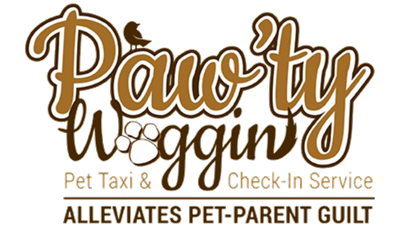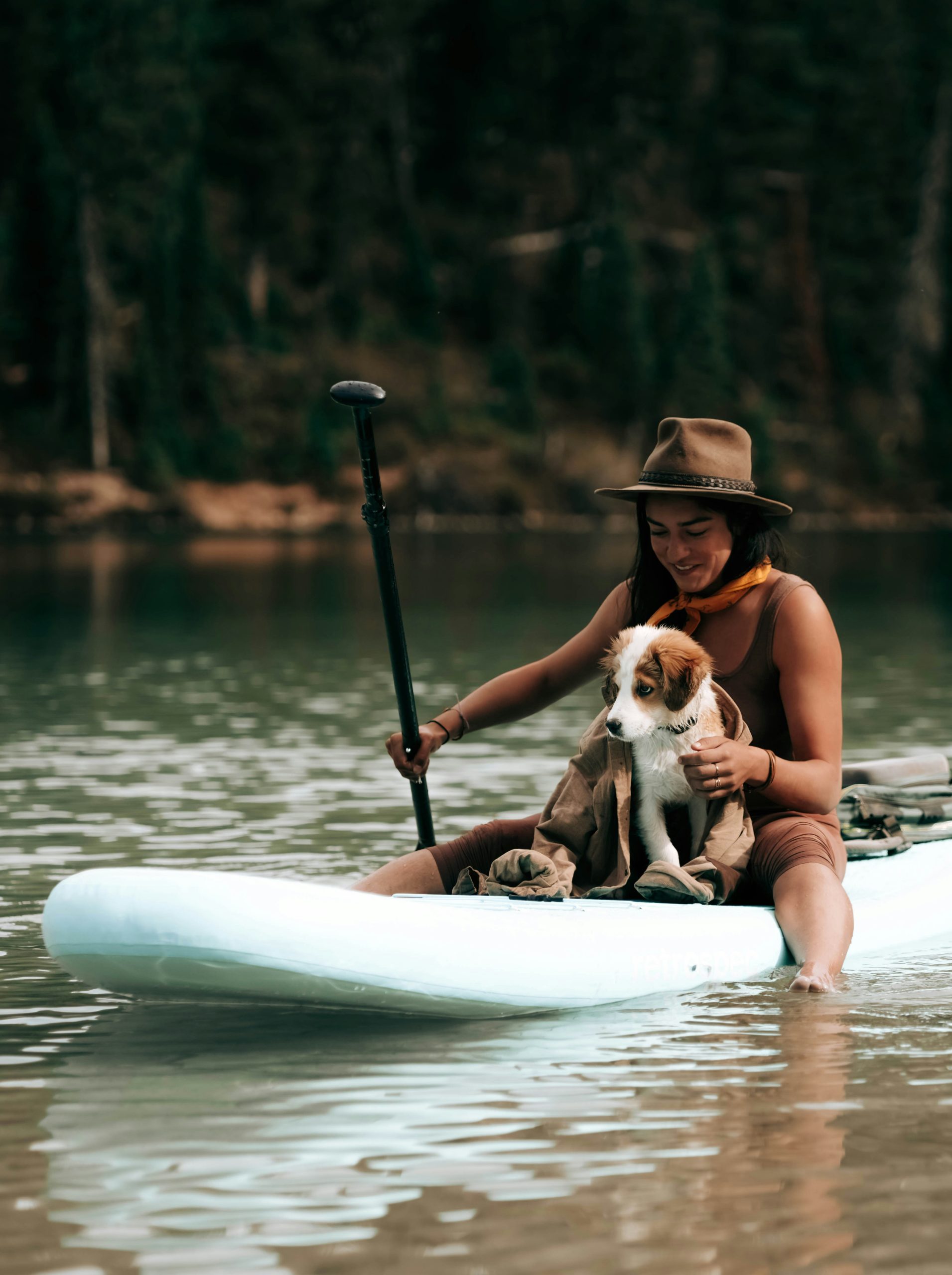If you’ve been watching the news or scrolling through your community Facebook groups recently, you’ve probably come across headlines or friendly warnings about blue-green algae in BC lakes this summer. From local vets to regional health authorities, concerns have been
growing around this not-so-pretty bloom that surfaces when the weather heats up—especially where pets are involved.
At Paw’ty Waggin’, we’re all about outdoor fun and dog-friendly adventures, but sometimes even the splashiest summer days come with a side of caution. If you’re planning lake dips, paddleboarding sessions, or trailside swims with your pup, this is the blog to read before you leash up and head out.
What Is Blue-Green Algae, Anyway?
Blue-green algae—also known as cyanobacteria—is a naturally occurring bacteria found in freshwater. It tends to thrive during summer in still, warm lakes and ponds, and when conditions are just right, the bacteria multiply into thick “blooms” that spread across the water’s surface.
You’ve probably seen one at some point: it might look like spilled paint, pea soup, greenish scum, or oily foam creeping along the edges of a lake. While not every bloom is toxic, there’s no way to tell just by looking—and that’s where the real risk lies. Some algae types release toxins that are extremely harmful to humans, wildlife, and especially pets.
🐕 Why It’s a Big Deal for Our Four-Legged Friends
When we say toxic, we’re not exaggerating. Every summer, we hear about dogs getting sick—or worse—after being exposed to blue-green algae. Most often, dogs are affected after swimming in contaminated water, drinking from it, or even just licking their fur afterward during
a post-lake nap. This year, BC veterinarians have reported more than a few suspected cases connected to algae exposure. It’s not just hypothetical: reported bloom locations this season include Nicola Lake in the Interior, Elk/Beaver Lake in Saanich on Vancouver Island, and even Lost Lagoon in Vancouver’s Stanley Park. While Cultus Lake hasn’t made the recent list, locals will remember previous blooms reported there in 2022—a reminder that even popular, well-frequented lakes aren’t immune.
Symptoms can come on quickly. These may include:
- Excessive drooling
- Vomiting or diarrhea
- Difficulty walking or weakness
- Seizures
- Lethargy or unresponsiveness
In severe cases, toxins can affect the liver or nervous system. This can, tragically, lead to death if not treated quickly.
🛟 6 Simple Ways to Stay Safe While Still Enjoying the Water
Here’s the good news: you can still enjoy your favourite lake days—just be proactive and wise about where (and how) your pup plays in the water. Oh, and don’t worry—we’re not suggesting you cancel your paddleboarding adventures with your four-legged co-pilot! You just need to
keep that splash safe. Here are some tips you’ll want to save:
- Check Local Advisories Before You Go
Always take a quick peek at BC’s Water Quality Advisories - Avoid Water That Looks Suspicious
If you see colourful film, floating scum, or if it smells off—skip it. It’s just not worth the risk, no matter how enthusiastic your pup is. - Keep Dogs Leashed Near Shorelines
Especially if you’re unsure about the water or at a new-to-you beach. Curious noses and tongues can find trouble in seconds. - Pack Your Own H2O
Always bring clean, fresh water from home—and a collapsible bowl—for your pup to drink. That way, they won’t be tempted to sip from the lake while you’re loading the kayak. - Rinse Off After Swims
Even if there’s no advisory posted, a freshwater rinse with a hose or jug afterwards helps keep their coat—and your peace of mind—clean. - Know the Emergency Signs
If your dog starts vomiting, drooling, stumbling, or showing sudden fatigue after being around water, don’t wait it out. Contact your vet immediately and let them know algae exposure is possible.
🔍 Want to Help? Join the Algae Watch Network!
Here’s something cool: you can actually take part in protecting our lakes and fellow pet lovers across BC. If you spot what you think could be a blue-green algae bloom, you can submit an observation—picture or sample—directly to BC’s Algae Watch program. This helps inform official water advisories and keeps the community safe. Your heads-up could make a big difference.
➡ Submit your algae observation here
Pretty neat, right?
🏕 Soak Up the Last Weeks of Summer—Safely!
August is winding down, and whether you’re heading to the Interior for a lakefront camping trip, ferrying off to the Island, or squeezing in some dog-friendly paddling before back-to-school chaos begins, make sure your lakeside adventures end in wagging tails—not vet visits. And hey—if your idea of summer fun includes a paddleboard, a lazy lake float, and a wet, grinning dog riding shotgun—we’re right there with you. Just remember to stay alert for signs near lakes, double-check advisories before you go, and trust your instincts when the water doesn’t look quite right.
At Paw’ty Waggin’, we’re all about helping pets (and their people) enjoy BC’s best with confidence. Whether you’re hiking, paddling, road tripping, or just strolling near the water, a little knowledge goes a long way in keeping your pets safe, healthy and happy.
Here’s to a splashy, joyful, and safe end to your summer. 🐾 💙 Stay wagging, stay curious, and enjoy the ride,
The Paw’ty Waggin’ Crew
❗ Important note: Always consult BC’s up-to-date water safety and algae advisories before travelling to or swimming in local lakes. Conditions can change quickly based on temperature and water movement.
Want to help monitor blooms in your area? Submit your observation or photo here



